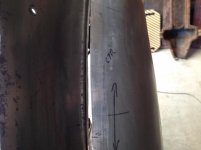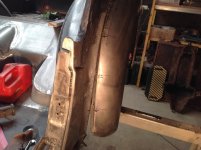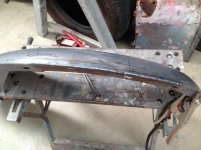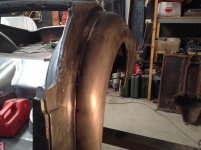Merry Christmas everyone.
I got a little bored with doing panel work earlier this year and so I started rebuilding the engine, gearbox and differential for the TR. I haven't posted anything related to those activities because there are a number of comprehensive rebuild threads on the forum. Likewise, I rebuilt the door frames which were rusted out completely in the bottom third and reskinned them but didn't document it as it has been done by several others in detail. Many thanks to them for guiding the way.
In August, I started again on the body panels, in particular the bonnet. The sample I have is a post 60k with raised hinge plinths. The body does not have plinths. I removed the front and rear strengthening frames to reveal the rust underneath. The rear frame had additional thickening piece which goes in the raised plinth. I cut these off and used the hammer and dolly to flatten the plinth back into the main bonnet metal.
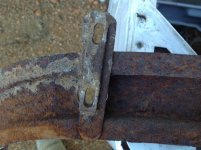
Rusted section at rear.
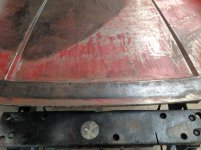
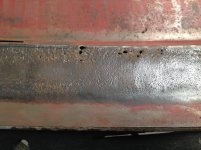
Rusted section at the front.
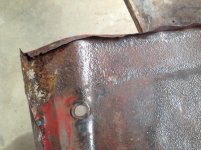
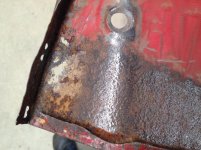
I decided to replace the front five inches of metal and about the same at the middle of the rear. The rear was quite straight forward, with simply a small flange on the rear edge, using the removed section as the pattern. I deliberately cut this flush with the raised section in the middle of the bonnet so I would be welding along the bend in the metal, which would assist in minimising warping of the sheet.
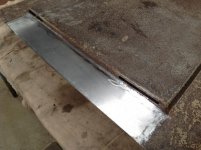

The front edge is more difficult because although it is a straight line when you look down on it, the curvature necessitates a pattern to ensure the resulting edge is straight. When laid out on the flat, this edge curves and hence the lip which bends under and clips on the strengthening frame has to be carefully bent along its length. Ie it can't be bent over a straight edge. The left photo below shows the flange being worked over a bit at a time. The right photo shows the result of doing it wrong. Made the mistake of starting with a straight line bend and then curving the piece to match the flow of the bonnet with a resulting incorrect leading edge. We learn by our mistakes!
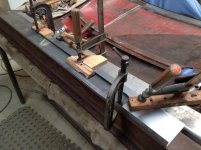
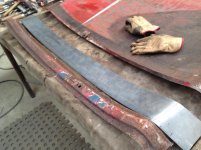

 Hi Guest!
Hi Guest!

 smilie in place of the real @
smilie in place of the real @
 Pretty Please - add it to our Events forum(s) and add to the calendar! >>
Pretty Please - add it to our Events forum(s) and add to the calendar! >> 

